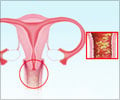
"The biofilm contributes to bacterial resistance, and that can cause severe, persistent infections around heart valve implants and in lungs and the urinary tract," explains postdoc. Mikkel Girke Jørgensen from the Department of Biochemistry and Molecular Biology at the University of Southern Denmark. Together with professor Poul Valentin-Hansen from the same institution and scientists from American Eunice Kennedy Shriver National Institute of Child Health and Human Development, Bethesda, and Georgetown University Medical Center, Washington DC, he stands behind the new discovery.
The researchers now understand the underlying regulatory mechanisms behind the formation of biofilms. The mechanism involves small RNA molecules, which can affect bacterial gene expression and thus the decision of whether to form biofilm or not. Bacteria can move by using their so-called flagella to swim with. When they need to form biofilms, they "turn off" the flagella, stop moving and start to form a biofilm.
"We have now established what decides whether they swim or not - and that determines whether they form biofilms or not," explains Mikkel Girke Jørgensen and continues:
"Prospects for the pharmaceutical industry are huge. This increased understanding of biofilm formation may be the first step in creating new ways to treat complicated infections in the future. "
Advertisement











